Existing User Log In
New User Registration
Register for a free account to gain full access to the VGChartz Network and join our thriving community.



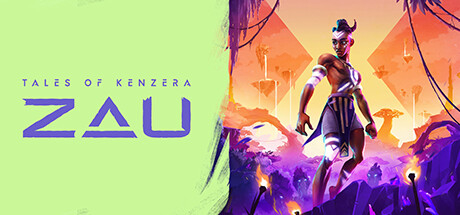

America - Front


America - Back

Surgent Studios
Platform
 (Add Date)
(Add Date) (Add Date)
(Add Date) (Add Date)
(Add Date)
| Owners: | 0 |
| Favorite: | 0 |
| Tracked: | 0 |
| Wishlist: | 0 |
| Now Playing: | 0 |
For all of the justified resentment towards The Game Awards and EA, it speaks volumes to their better natures that they enable new creatives a genuine shot at stardom. One such example was during last year's TGA show: Abubakar Salim (voice of Bayek in Assassin's Creed: Origins) came out to reveal his new studio, Surgent Studios, and its EA Originals debut inspired by Salim processing his father's death. As potent and genuine as that context may be, there's still an uphill battle in convincing someone to try out yet another Metroidvania from an untested source. But by cementing this inspiration with a unique cultural background, Tales of Kenzera finds some oxygen in melding the new with the familiar.
As if in dialogue with itself, the story setup is a fiction within a fiction: a young man, Zuberi, in the early stages of mourning is given a book written by his late father. After leaving the afro-futurist utopia of Kenzera, we're transported to an older era with our shaman protagonist, Zau, asking The God of Death, Kalunga, to resurrect his father (his "Baba" as he's often called). Kalunga agrees on one condition: defeat and capture the spirits of three rogue gods.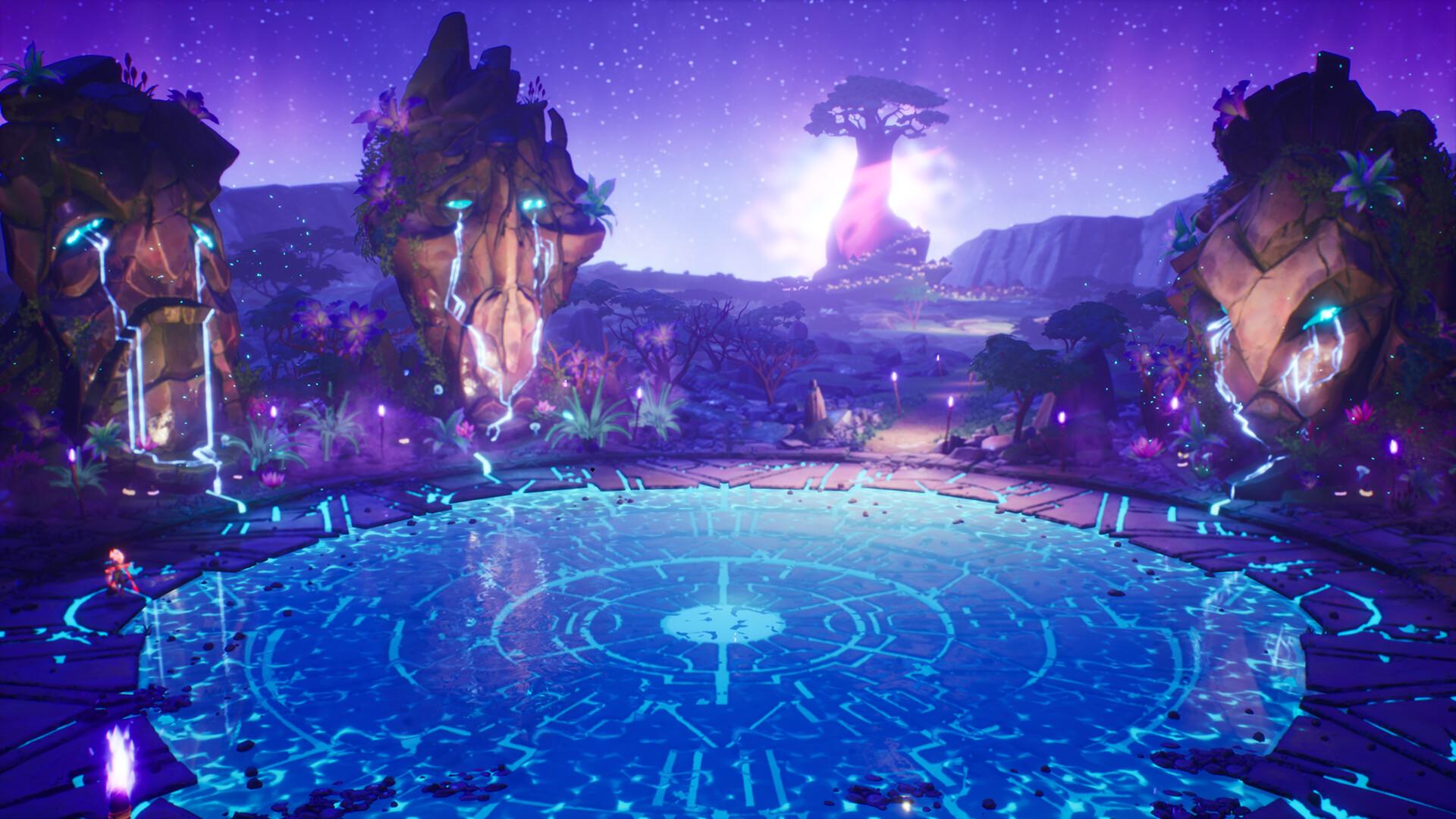
Perhaps the most fascinating part of Tales of Kenzera's storytelling is just how easily its Bantu cultural inspirations elegantly harmonize with its Greek or Nordic counterparts. Sure, some of the locations or persons of interest are tougher to pronounce, but they still capture our near-limitless hunger for grand stories. Some exploration off the beaten path will often net you fun baubles like "Echoes" (condensed versions of African folktales), which highlight Zau's place within this world. The compendium of Bantu lore captures a type of authenticity with its voice acting and arrangement of succinct stories.
Moreso than having extra collectibles, the grander world-building feels integral in capturing the timeless legend being told. Since Kalunga tags along – akin to Ocarina of Time's Navi – he's essentially a spiritual guide for the moment-to-moment events and a type of distraught overseer. He also answers one burning question: what does a "rogue spirit" mean in this context? While Zau's naiveté and stubbornness gives him a one-track mind at the beginning, the story's main arc is about reinforcing the inevitable cycle of death and renewal, of ancestors passing on their collected wisdom, of the corruption in fighting against nature. It shares many thematic similarities with Death's Door, in fact; and though it doesn't measure up to that comparison's potency or satirical bite, its humanity and grander mythos still provide impressive uplift.
Its main stumbling block is in the particulars rather than the grander scope. Zau and Kalunga's budding relationship (as much as one can have that with a god) does better when exploring the game's central themes versus their general comradery. Almost every comedic bit is about as funny as a cancer ward, and side characters are either a bit annoying or filler background, despite the quality voice acting behind everyone. These secondary elements don't diminish the meaningful – albeit ham-fisted – spiritual lessons, nor Zau's tugging moments of grief that sneak in whilst reflecting on his Baba's words, but it could've truly hit a special stride if major and minor aspects were clicking in unison.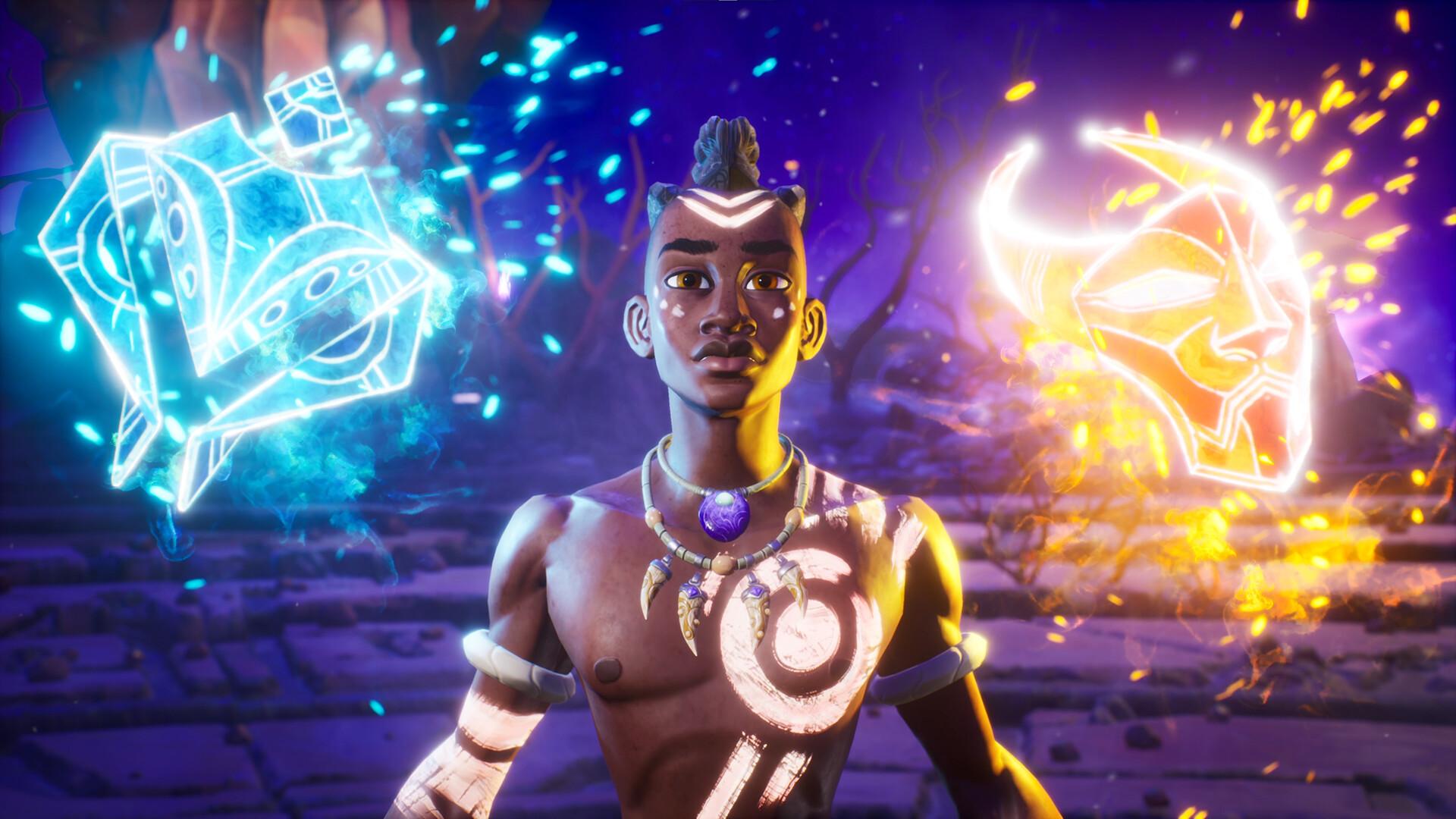
As Metroidvanias are wont to do, the struggle to surmount these broken spirits will place you in disparate environs – from breezy mountaintops to swampy forests – while battling out varied enemies in contained arenas. What's more surprising is the quasi-linear structure of these prodigious spits of land. There are obvious detours in place for new powers and necessary keys, but it's rather surprising just how de-emphasized exploration feels. Aside from obvious things like blocked passageways or floating grapple hook points signposting you to return with the right gear, roughly 75% of each place can be explored with Zau's default moveset. Since double jump, dashing, and wall-bouncing are there from the start, newer abilities are tied to his shaman powers.
One could make contextual arguments about how having a single-minded goal reflects Zau's character, so the vast majority of everything being on the golden path makes sense; further, it's not like all Metroidvanias strive in making an interconnected web of rooms, which can arguably be for the better given their own design goals. Tales of Kenzera's structure doesn't manage to argue for stretching itself out so much, especially for brief there-and-back portions to acquire a new ability. The way this awkward middle between linearity and Metroidvania-lite is balanced leads to so much acreage feeling inconsequential after the first time through. Even the act of heuristically clearing the 'fog of war' in the map UI is swapped in favor of seeing the entire section upon entering it. That too could have a good contextual reason, as though Kalunga gave Zau a map, but it serves to diminish player curiosity.
As a shaman, Zau is gifted with two different magical masks – the Sun (orange) and Moon (blue) – which alter both his appearance and abilities. Each of them also emphasizes different playstyles: Sun on hard-hitting physical strikes and Moon more ranged attacks. In theory, they're meant as dual halves for you to elegantly swap between depending on specific circumstances. That's sometimes the case in practice too. While certain high-traffic roads will have the odd few stragglers waiting for you, wave-based combat rooms enable greater combat sophistication: spend your moon bullets, prime multiple targets for mid-air juggling with a well-timed uppercut, use ice balls to temporarily halt an oncoming attacker, and so on. Even though the Sun/Moon skill tree is pared down to bare essential buffs and extra moves, the trickle of new tricks adds just enough to Zau's action vocabulary.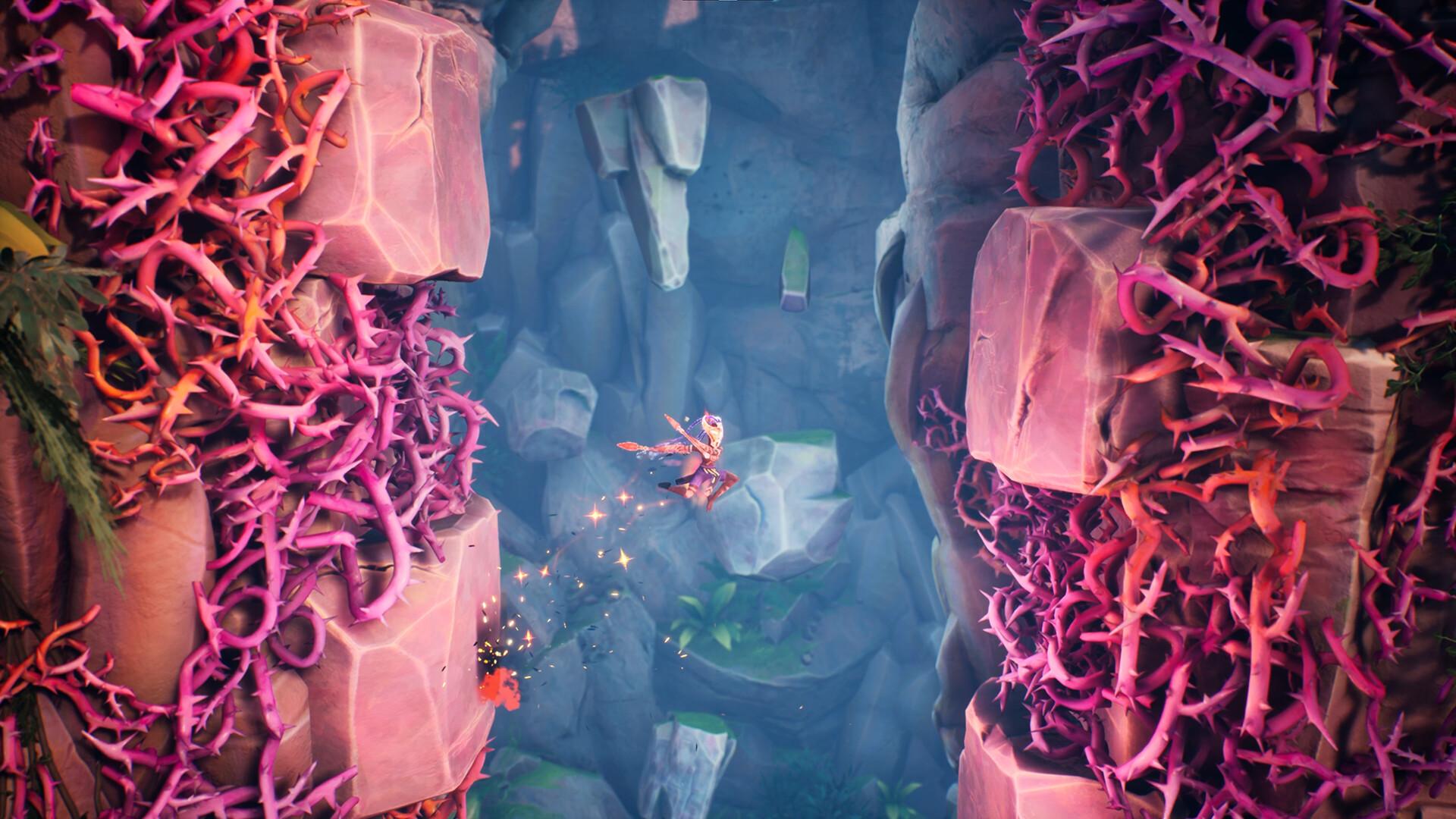
At its best, combat can feel like a familiar yet therapeutic stopgap between all the running and platforming; at its worst, it'll tempt you to throw your controller against the wall. The fundamental issue stems back to polish. Considering how often Challenging difficulty demanded I spend my magic meter on heals versus power attacks, it's never fun to see knockback recoveries match perfectly with some enemies' windups, leading to double or triple consecutive hits with no escape. Certain environmental nuances like the big & abundant thorns protruding out of walls also turn out to be a fucking nuisance, especially when certain projectiles can knock you into them which compounds into another hit. It's not so much having rough difficulty spikes moreso than having the tools to manage these encounters in an engaging way, which the combat design often fails to achieve – particularly when the mobs grow in number and enemy tells become harder to discern.
There's also something to be said about how by-the-numbers each design element ultimately is. As stated, there are enough fresh extras sprinkled in to play with Zau’s moveset; however, there's not much enemy variety beyond one distinct variant and a few decent bosses. Outside of counter-productive environmental hazards or annoying color-coded shield enemies, it's trying to make the most out of these repeats. Pure platforming segments at least employ some spectacular flair, but the under-polished movement mechanics feel misleading for segments that demand precision; one of the worst examples of this being insta-kill spikes (not to be confused with thorns) that have larger hitboxes than what's visually shown, leading to the occasional awkward death after landing on a platform's edge.
Perhaps it's not the best comfort to say it tends to look better than it plays, but it's hard to avoid that. Visually speaking, this of course comes with a few asterisks of having a modest budget, so expectations should be in check for categories like basic human character models and such. While I understand the appeal, the over-emphasis on exaggerating the orange/blue color spectrum for certain attacks and events gets obnoxious – even on my pre-set visual settings. It certainly doesn't match the likes of Ori or other incredible standouts, but the variety of detailed backgrounds, combined with Nainita Desai’s august fusions of electronica and African tribal rhythms, provide a grander atmosphere. It's not an all-around feast for the eyes, but is certainly one for the ears.
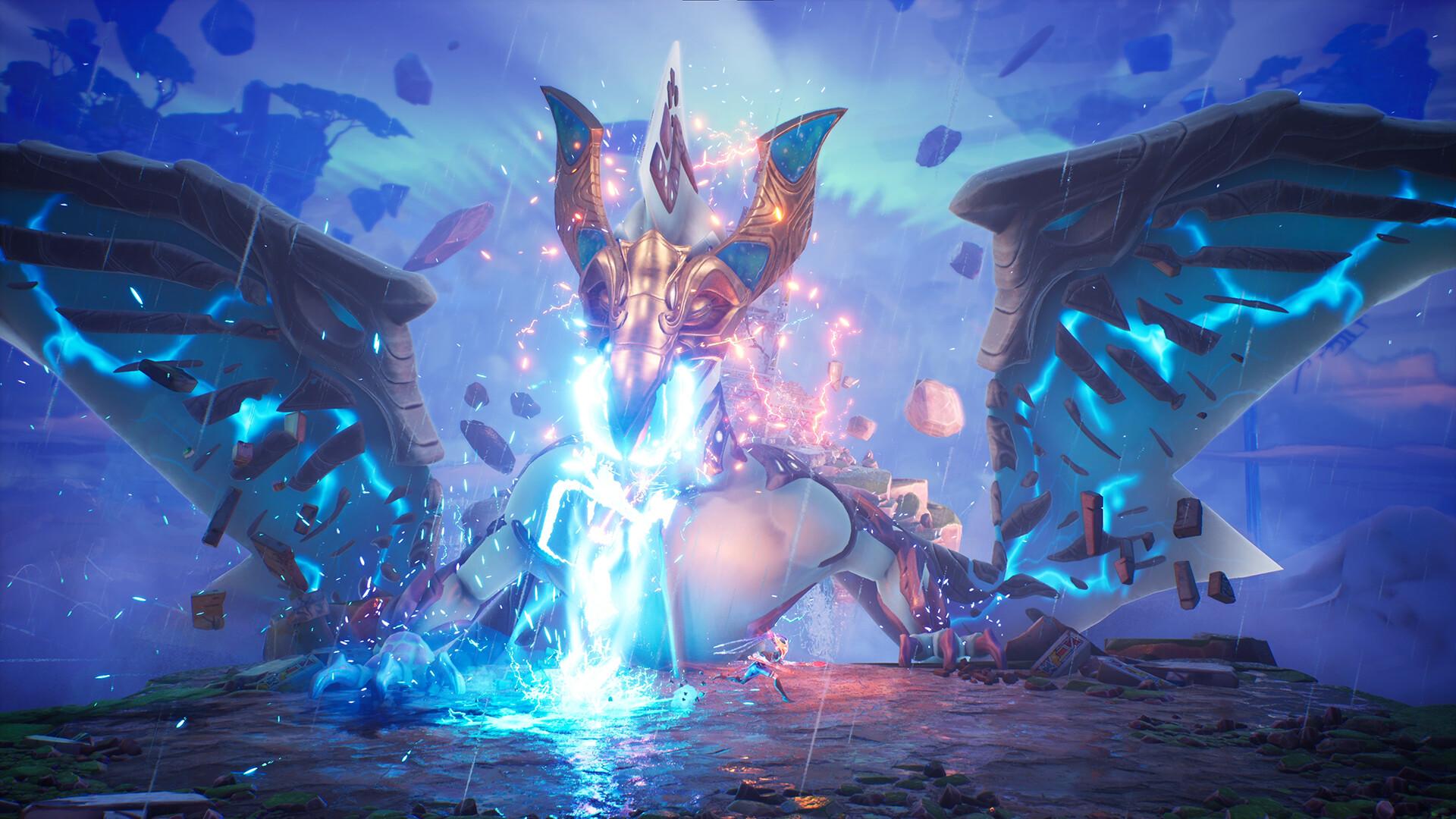
If purely considering the number-crunching value, most players will have no issue throwing $20 at a campaign that easily reaches double-digit hours if trying for a completionist run; even sticking to the golden path will be around eight hours of playtime. What irks me though is how… misleading those stats feel. Because the level design relies too much on stretching the levels versus interlocking them in special ways, exploration too often feels like padding.
Reminiscent of The Last Case of Benedict Fox, Tales of Kenzera: ZAU feels like 2024's definitive example of mismanaging Metroidvania 101 tenets. And it's a shame to be that harsh when its inspiration feels like a wonderful antidote to the soulless company (EA) backing it and the commercialized entity (TGA) which first advertised it. Through an impassioned sense of grief, Abubakar Salim wanted to craft a story that authentically tries to wrestle with those same feelings. That's a great achievement of the medium as a potential creative outlet. Unfortunately, though, it's saddled to a haphazardly-designed game that falls short of sustaining that enthusiasm and squaring up against its contemporaries.
Contractor by trade and writer by hobby, Lee's obnoxious criticisms have found a way to be featured across several gaming sites: N4G, VGChartz, Gaming Nexus, DarkStation, and TechRaptor! He started gaming in the mid-90s and has had the privilege in playing many games across a plethora of platforms. Reader warning: each click given to his articles only helps to inflate his Texas-sized ego. Proceed with caution.









